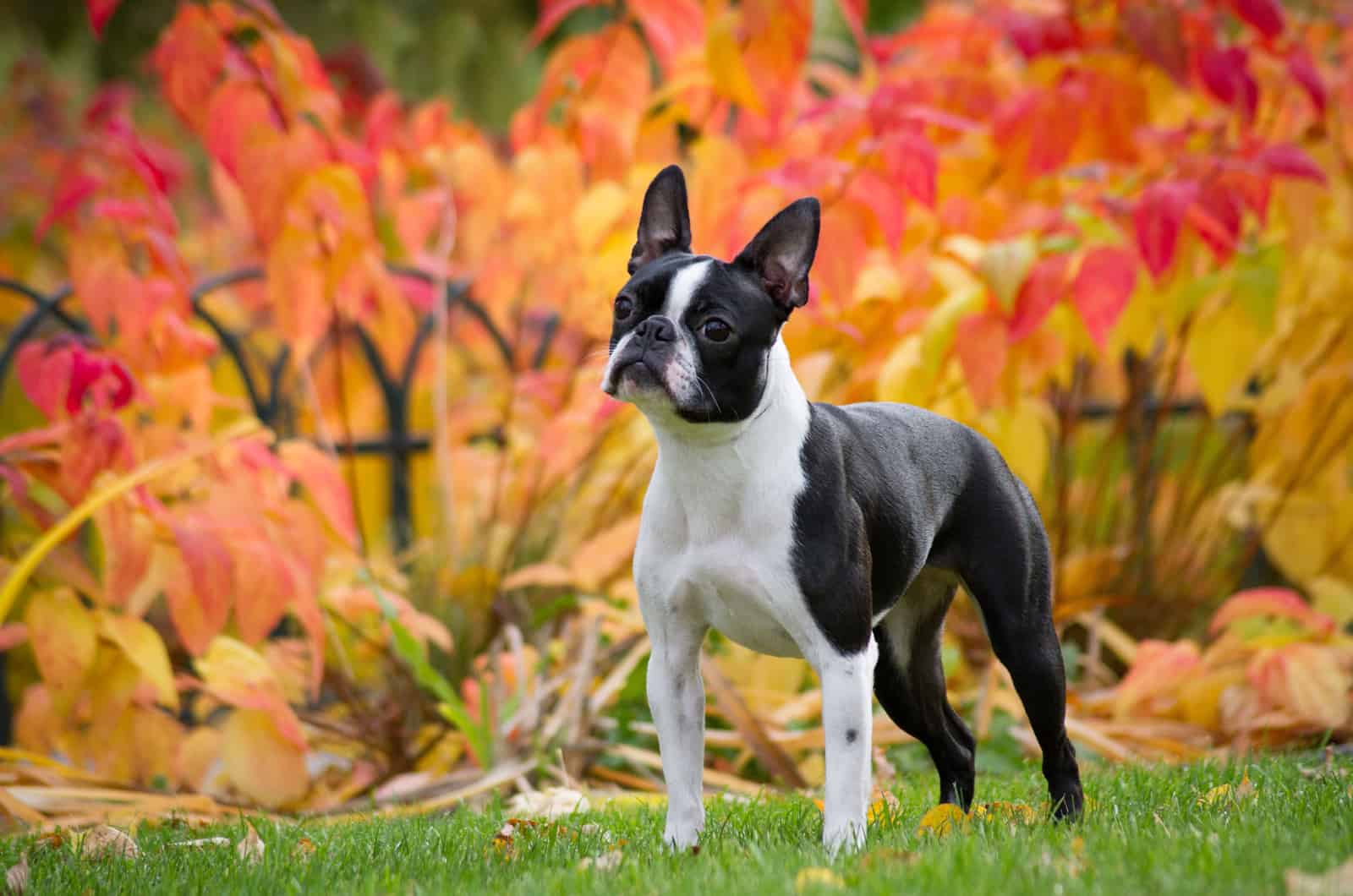Thinking about having this little gentleman in a tuxedo all for yourself? You wouldn’t be the first one who wasn’t able to resist the cuteness of the Teacup Boston Terrier Puppy!
The Teacup Boston Terrier was created to incorporate the adorable Boston disposition into a cuter body. Today, we’ll examine the breeding practices for tiny Boston Terrier puppies and determine whether they make good companions.
The Boston Terrier is a well-liked breed that has a reputation for being a fun-loving companion. Their small frame and fitted tuxedo jacket make them easily identifiable.
A square flat nose, lovable wide-set spherical eyes, and unusual facial traits define the Boston Terrier. The Boston, who was given his name after the city where he was produced, is described as such a gentleman that he has earned the title “The American Gentleman.”
But is this dog breed right for you? Does it fit your personality, lifestyle, and general preferences? That’s what I’m here for. And you can most definitely be sure that you will get all of the information you will need before actually owning this pup!
What Is A Teacup Boston Terrier?
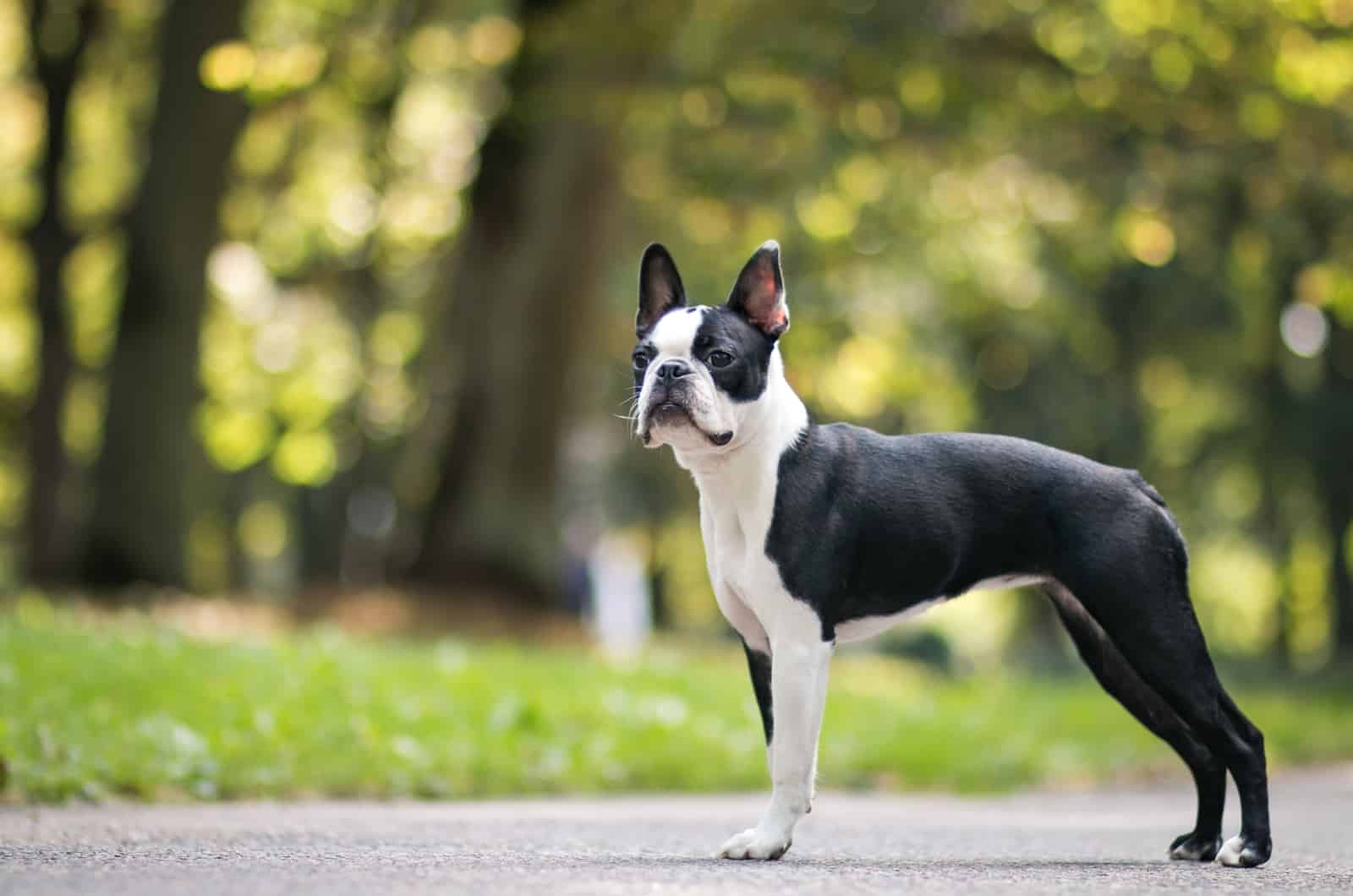
Before we start going a bit deeper into the topic, we first have to define and state the obvious things.
The Teacup Boston Terrier is a small dog breed, just like the Pug, Yorkie, Chihuahua, Maltese, and many other tiny dog breeds.
Smaller Boston Terriers are known as Teacup Boston Terriers. Standard Boston Terriers are crossed with smaller examples of that breed (known as the runts of the litter) to create teacup Boston Terriers. Even when completely grown, they weigh less than 10 pounds, which makes them more likely to experience health issues.
We are all witnesses to the trend where tiny dog breeds are becoming more popular by the day. A reason for this is that this dog breed is a perfect fit for people living in apartments, due to its small size and low maintenance.
Origin Of The Boston Terrier
In Boston, Massachusetts, in the late 1800s, the All-American Boston Terrier was created. The breed originated from crossbreeds between bull and terrier breeds, the English bulldog, and the French bulldog. The beautiful breeds that went into creating the Boston Terrier were all bull and dog-baiting breeds.
A Bulldog/ White Terrier crossbreed referred to as ‘Hooper’s Judge’ is considered to be the founding father of the breed. French bulldogs are thought to have been introduced to the mix later to soften the terrier’s disposition. Additionally, adding a French Bulldog improved the affectionate, vivacious characteristics that are now highly admired in the breed.
The Boston Bull Terrier was the third name given to the breed after Round-Headed Bull and Terrier. Finally, the name was abbreviated in 1891, and the breed was from then, known as the Boston Terrier.
The breed was actually approved by the American Kennel Club shortly after that, in 1893, and just around 20 years later, in 1915, the Boston Terrier became the most popular dog of the year in the United States.
The breed standard did not place much emphasis in the early years on color and markings. By the 20th century, the breed’s distinguishing markings and color had been included into the standard and had become a necessary characteristic.
Since 2003, the Boston Terrier mascot Blitz has been a real-life spectator at Wofford College football games in Spartanburg, South Carolina. Since 1979, Massachusetts has recognized the Boston Terrier as its official state dog.
But When Was The Teacup Boston Terrier Made?
There is no specific date and time when this dog breed first saw the lights of this world, however, there is a time period that this tiny breed is somehow attached to.
The Jazz age, more widely known as the Roaring 20s, was the ultimate time of American decadence. Lavish lifestyles, hedonism, and enjoying all the benefits that the upper class could afford, resulted in extravagant dog breeds owned by even more extravagant people.
The Teacup Boston Terrier was probably made around that period, because let’s be honest – who else would think of making a small dog breed even smaller, than those who have time to think about those types of things?
Therefore, this dog breed may be a result of the new money population of Massachusetts trying to prove their extravagance to other society members.
Being able to carry a small dog wherever you go, was something that, back then, only wealthy people could afford. And making a Mini Boston Terrier dog was definitely a sign of great extravagance.
How Did Breeders Get The Teacup Boston Terrier To Be This Small?
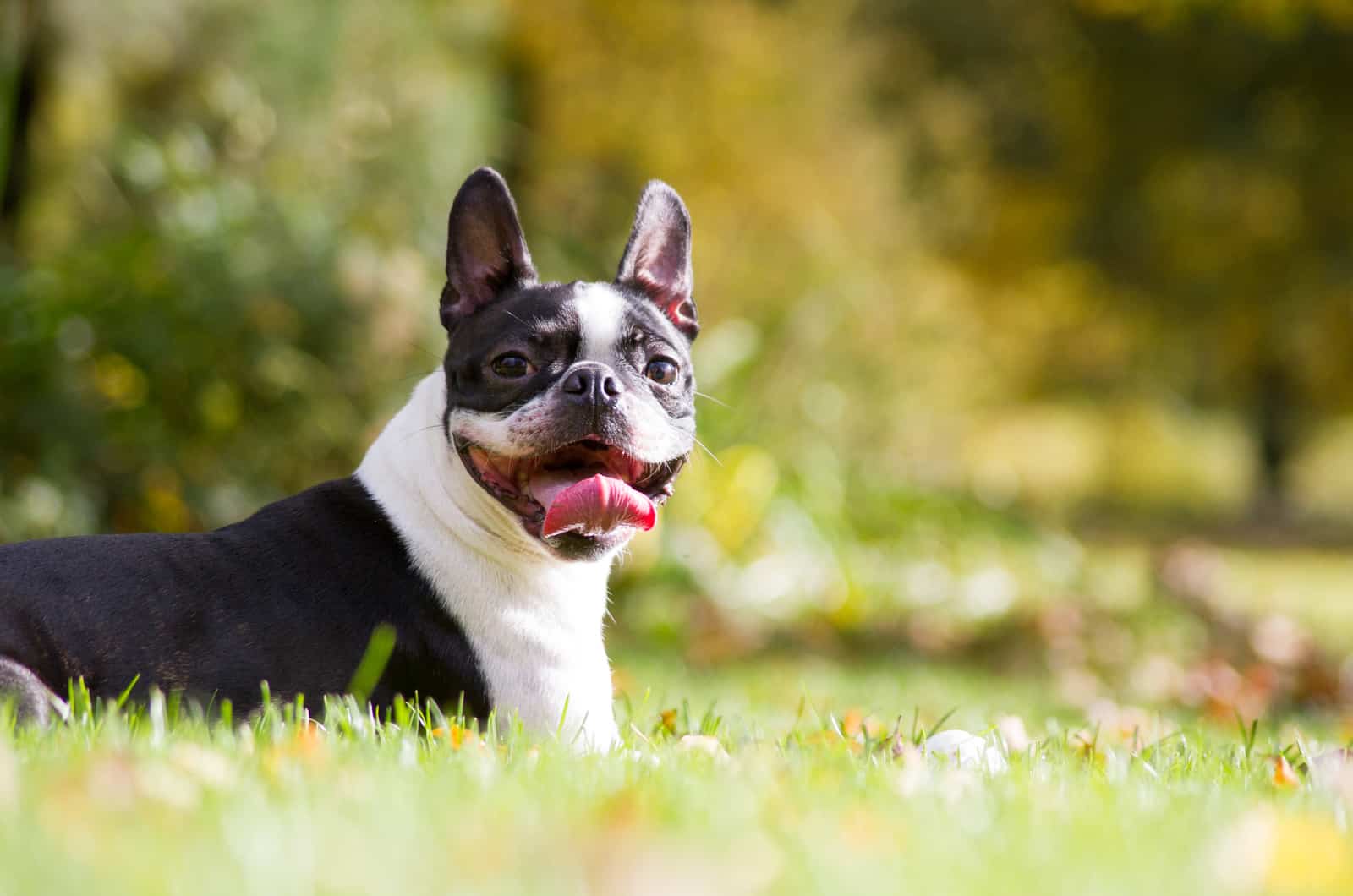
Due to their small size and perpetual puppy-like appearance, teacup dogs are incredibly popular as pets. They are in high demand among aspiring dog owners because of their adorable little size, which explains why they may sell for hundreds of dollars each. The American Kennel Club does not accept teacups as meeting official breed standards since they are often much smaller.
Getting a teacup dog breed is achieved by breeding the runts of the litter. Let’s first define what being the runt of a litter signifies. ‘Runt’ is another word for being the smallest or weakest of a litter.
A litter is just a collection of young animals that are all born at the same time to the same mother. There is currently no agreed-upon description of what the standards for runts are, despite the fact that they are frequently shown as the litter’s tiniest puppies.
Runts have a number of disadvantages since they are weaker and/ or smaller than the remainder of the litter, but one of their biggest drawbacks is that they find it more difficult to compete for the mother dog’s milk, which she distributes to her litter. The smallest puppy has a difficult time receiving food from its mother since the rest of the puppies are stronger than it.
And breeding runts together is how the teacup dog breeds, like the Teacup Boston Terrier were brought to life.
And yes, before you ask yourself: does the breeding of the weakest pups of the litter have an impact on the general well-being of the resulting dog? Yes, it does. But more about that a bit later.
What Does A Teacup Boston Terrier Look Like?
The teacup’s attractiveness is greatly influenced by the cute puppy-like trait of the large head compared to the small body. There’s something almost magical about that, like having a dog who never grows up.
A smaller dog staying in your home or apartment has some kind of appeal that makes a house feel like a home, you have to admit. Also, they are more controllable than larger dogs,take up less room, and create less of a mess.
A little Teacup Boston Terrier is portable and needs less food and activity than other larger dogs. There are several factors that contribute to a Teacup Boston Terrier’s popularity, aside from the ‘gentleman in a tuxedo’ looks.
They have huge, round eyes that look the same as the Pitbull’s. They have that characteristic nose and muzzle, which is famous with Brachycephalic dog breeds such as the Pekingese, Pug, Boston Terrier and others.
Teacup puppies are incredibly small, and you will need to be extra gentle and careful with them. Their ears and tails are usually cut just a few days after birth, or immediately after birth. However, many dog owners only cut their tails.
They have an apple shaped head with longer ears, a proportional torso, and skinny yet muscular legs.
How Big Does A Teacup Boston Terrier Get?
It can be a bit odd how small the Teacup Boston Terrier is. Maybe it is so because we are used to the Boston Terrier already being small, and the teacup version of it makes it seem quite strange.
Boston terriers in the teacup size are under 5 lbs (2.2 kilograms) in weight and under 7 inches (17.8 cm) tall.
Pretty tiny, right? You won’t need much dog food to feed this little one. A few days ago, I was at my friend’s house, and she was feeding her pup. Out of curiosity, I asked her ‘how much do you feed him?’, and she replied: ‘about 25-30ish little granules a day’ and that was the cutest thing I have heard in the last few days!
What Are The Colors Of A Miniature Boston Terrier?
Black and White, Black Brindle, and Brindle and White are the most common. After those, Seal & White, and Seal Brindle and White are a bit less common, but still, AKC Boston Terrier colors, in which the Teacup Boston Terrier can also come in.
Other color variations of the Teacup Boston Terrier include Fawn & White, Lilac, Blue, Red, Red & White, Fawn, Merle, Chocolate (Brown), White (Platinum), Cream, and Lavender.
If you want to explore the Boston Terrier colors further, I present to you 9 Boston Terrier colors that you will adore.
What Kind Of Personality Does The Teacup Boston Terrier Have?
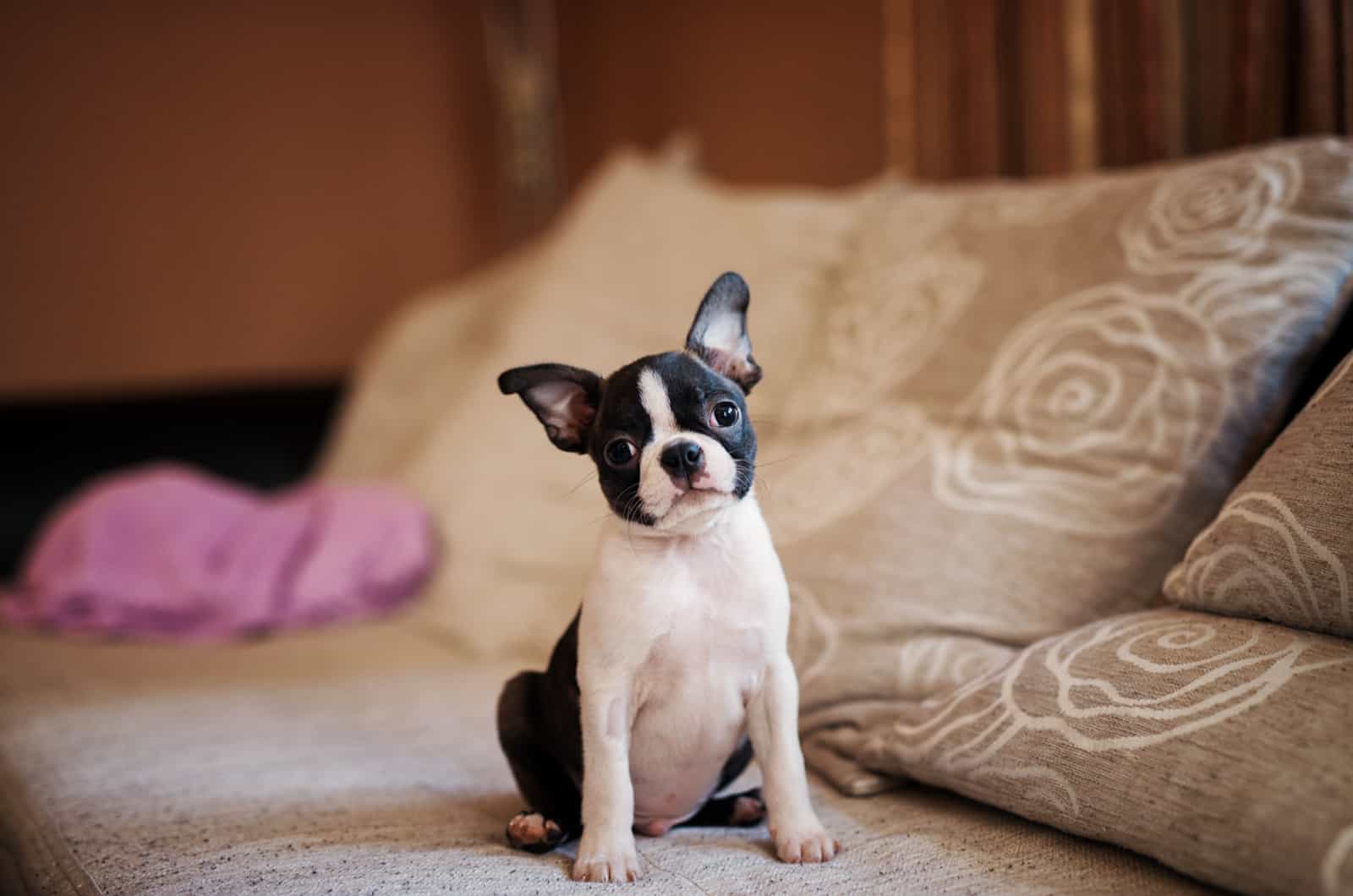
The Teacup Boston Terrier is a kind, sociable, and incredibly cuddly dog despite its troubled background. It is a devoted and affectionate dog that enjoys taking long strolls in the city and in parks. The Teacup Boston Terrier is distinguished by his loose and beautiful gait. It is an extremely smart, fearless, and attentive dog, making him the ideal friend for kids.
Even in apartments, it is able to live quietly because of his adeptness at doing so. If you’re worried that it could disturb the neighbors, don’t be, it only barks when it’s absolutely required to defend its owner or to signal an emergency.
This terrier breed, which is extremely bright, is well-known for both his bouts of hyperactivity and intransigence, as well as its love for his family. As a result, early training is advised to ensure a well-socialized and amiable Teacup Boston Terrier.
Be ready for a buddy who practically stays by your side all the time and is energetic, lively, and occasionally plain comical, if you are thinking of bringing a Teacup Boston Terrier into your household.
Is The Teacup Boston Terrier A Good Family Pet?
Teacup Boston Terriers make great family pets because they form close relationships with their owners. They are companionship dogs with few counterparts because of their compassionate gentle demeanor, joyful attitude, and loving behavior. The Boston Terrier is the ideal canine companion if you’re seeking someone devoted and loving.
Cats and Bostons typically get along nicely, especially if they were reared together. Compared to other tiny dogs, Teacup Boston Terriers are perhaps more understanding of kids because of their strong frame.
Boston Terriers particularly like playing with youngsters, as long as they treat them gently. Most Bostons like to hide a bone in the flowerbed or under the pillow, but fetch is their preferred pastime.
They are also considered an intelligent dog breed, so including some interactive dog toys in their daily activities would definitely keep them mentally stimulated.
The Boston Terrier is excellent for households with kids of any age since it will entertain them with amusing antics and snuggle alongside them on the sofa when they’re sleepy.
This breed is also an ideal pick for senior owners and people who live in flats or condominiums due to its modest stature.
Is The Teacup Boston Terrier A Healthy Dog Breed?
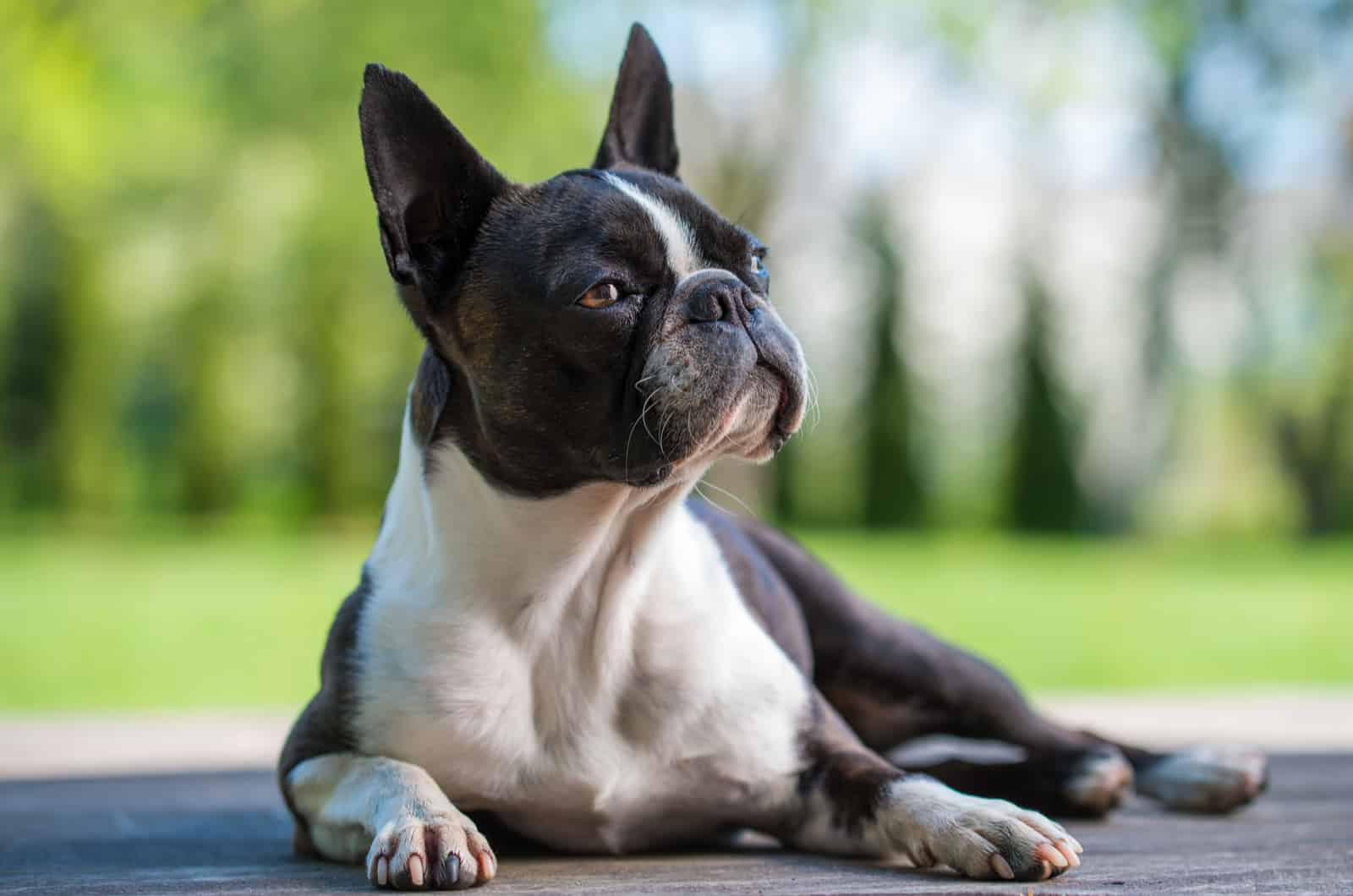
Well, I can be honest with you completely, or try to mask the truth. But you know that I am going to tell you the truth, no matter if it is ugly.
Teacup Boston Terrier owners usually report their tiny dog having at least one or two health issues during its lifetime. At least. I am sad to say this, but these dogs are not amongst the healthiest dog breeds out there.
Because runts of the litter are usually the ones who are the tiniest and most fragile in every sense, you cannot expect a fully healthy, joyful, energetic pup to come from the two runt parents.
They can have many health issues, some less serious and some others which may be more severe. However, we can definitely agree upon two facts: this dog breed is not amongst the healthiest ones out there, and it has some health problems that you have to watch out for, and regularly have them d for.
Their lifespan is usually from 10-12 years of age, which is a bit low for a small dog breed since small dog breeds tend to live longer than larger-sized dogs.
Some of the possible health issues that may affect the Teacup Boston Terrier are:
Cataracts
When the eye’s lens condenses, whether through changes in the protein composition of the lens or in the lens’ water balance, a dog is said to have developed a cataract. Blindness results from light not being able to reach the retina when the lens gets clouded. Behind your dog’s iris, a developed cataract appears as a white disk. Now, the normally black portion of the eye will seem white.
The haziness brought on by the lens hardening that occurs as a dog ages is nuclear sclerosis, not a cataract, and the two should not be mistaken. Age brings about this shift in all species.
Fortunately, even if your dog has nuclear sclerosis, light can still get through and touch the retina, allowing her to see. Sometimes, people mix cataracts with nuclear sclerosis.
Corneal Ulcers
A corneal erosion, also known as a corneal abrasion, is the loss of a few epithelial layers. A corneal ulcer is a deeper erosion that has reached the stroma and the whole epithelium. Fluid builds up in the stroma of a corneal ulcer, giving the eye a murky look.
A descemetocele is created if the erosion penetrates the Descemet’s membrane at its lowest level, via the epithelium and stroma. It’s a really dangerous condition to have a descemetocele. Descemet’s membrane rupture results in the leakage of the eyeball’s internal fluid, the collapse of the eye, and permanent damage.
Trauma is the most frequent factor in the development of corneal ulcers. An ulcer can develop as a consequence of laceration, such as from a cat scratch, or blunt trauma, such as when a dog rubs its eyes on any object. Chemical burns on the cornea are another typical reason. This could occur if anything that irritates the eyes, like shampoo or drywall dust, enters the eye.
Other illnesses, viral infections, and bacterial infections are less frequent causes of corneal ulcers. These could develop as a result of a disease that has spread from another part of the body or they might start in the eye. Other conditions that might put a pet at risk for developing corneal ulcers include:
Glaucoma
A condition known as glaucoma affects the eyes and results in an increase in intraocular pressure (IOP). A tonometer is a device used to assess intraocular pressure.
Glaucoma is not brought on by excessive fluid production; rather, it is brought on by insufficient aqueous fluid outflow. Primary and secondary glaucoma are further classifications for glaucoma.
In a healthy eye, primary glaucoma causes a rise in intraocular pressure. Certain breeds (such as the Teacup Boston Terrier) are more susceptible than others. It happens as a result of hereditary drainage angle anomalies.
Increased intraocular pressure as a result of an eye illness or damage is known as secondary glaucoma.
Deafness
Deafness may be more common in Boston Terriers than in other dog breeds. The majority of deafness cases in Boston Terriers (as in most dogs) are genetic and congenital, which means individuals are deaf from birth.
Lack of sensitivity to loud stimuli is the most typical indication of deafness. Your Boston’s hearing can be tested specifically by your veterinarian. Nevertheless, there are very few choices for treating canine deafness.
The majority of canine hearing loss, including that in Boston Terriers, is inherited congenital, meaning the dog is deaf from birth. These occurrences are most likely the result of a genetic flaw.
The merle, white, and piebald coat colors, as well as the piebald gene, are linked to many of these congenital deafness instances.A disorder known as piebaldism is defined by the piebald gene, which prevents melanocytes from forming in particular regions of the hair and the skin. Deafness is so prevalent in Boston Terriers because some of them carry the piebald gene.
Patellar Luxation
In small breed dogs, patellar luxation is exceedingly common and one of the main causes of hindlimb lameness and the early onset of osteoarthritis in the canine stifle. It’s crucial to get a diagnosis as soon as possible to stop the condition from progressing and creating serious secondary joint abnormalities.
The degree of osteoarthritis and skeletal deformity present, as well as the likelihood of osteoarthritis development, differ from case to case, making it difficult to predict.
Each patient receives a customized course of treatment based on the abnormalities found. The variety of treatments that are currently accessible and the ability to combine them means there is a suitable solution for any patellar luxation cause.
Brachycephalic Health Conditions
The bottom jaw of brachycephalic animals, such as dogs and cats, is abnormally longer than the upper jaw, a condition known as an “undershot” jaw. These animals also have exaggeratedly small and broad heads.
These anomalies are the consequence of choosing characteristics in accordance with pedigree breed standards, where all the emphasis has been on physical characteristics and appearance rather than characteristics that would preserve or increase the health and well-being of the animal.
The health and welfare of brachycephalic dogs can be affected by a variety of conditions, including breathing difficulties, digestive problems, eye disorders, labor problems, spinal deformities, activity and heat intolerance, trouble sleeping, skin and ear infections, and dental disease.
How Much Do Miniature Boston Terriers Cost?
Thanks to the Boston Terrier already being a popular breed, to buy one of these, you will just have to be ready to pay a nice sum of money.
This dog breed costs $2000 at the lowest price, going all the way up to $8000. However, it is no wonder, since taking care of the parent dogs’ health can be challenging, and raising these puppies takes a really reputable breeder.
Final Word
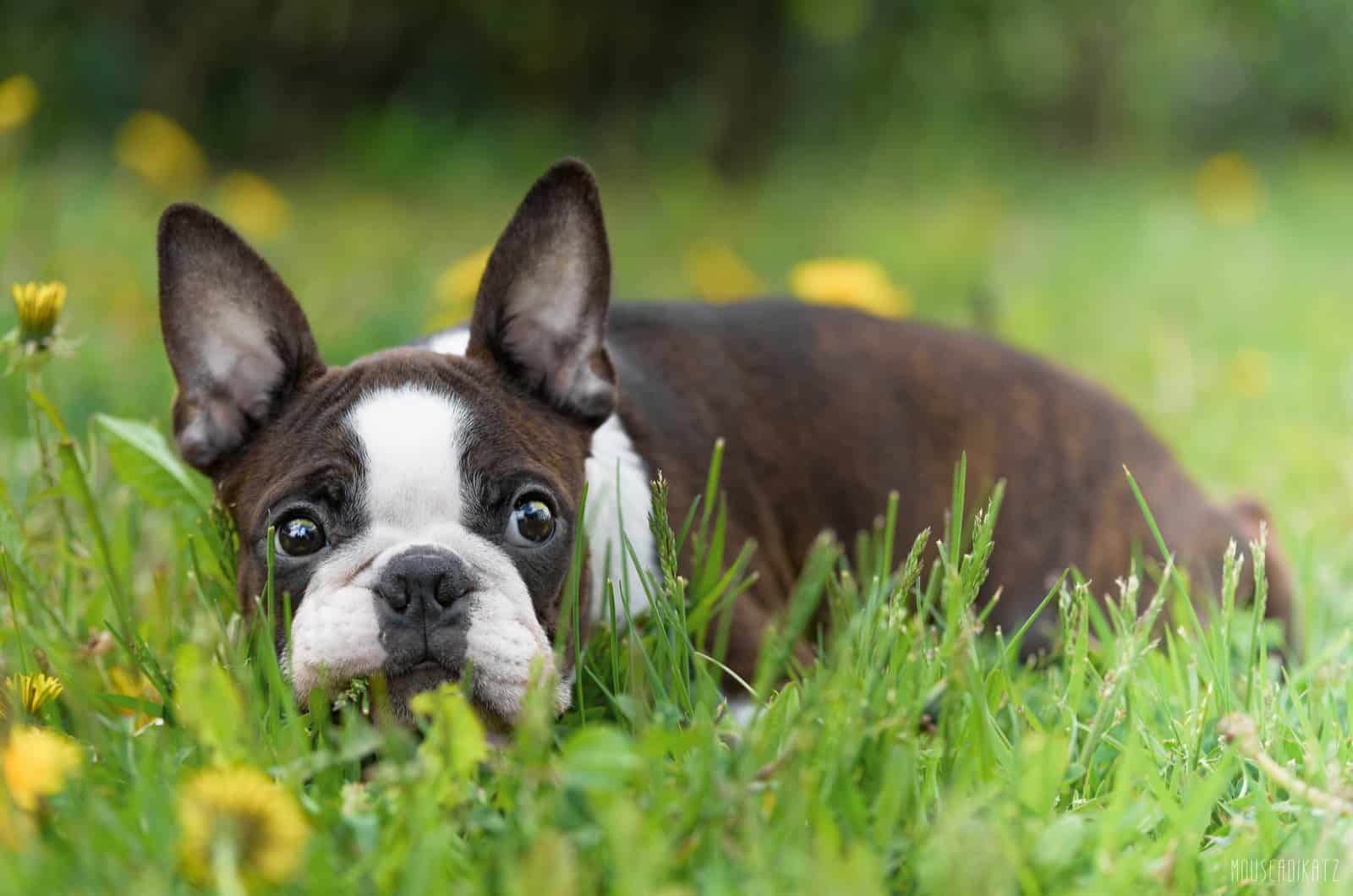
When searching for a puppy, keep in mind that terms like “teacup” refer to nothing more than a puppy that is smaller than the norm. It’s really a tactic to make little puppies seem more attractive and unique.
This illusion is encouraged by the fact that they are frequently offered for a substantially greater price. Additionally, it helps shady breeders stay in business by allowing them to continue breeding puppies that are getting smaller and smaller.
The Boston Terrier is predisposed to a variety of significant health issues, most of which are linked to its conformation even when they are not the child of two runts. We do not recommend this dog, despite the fact that the Boston Terrier has several amazing qualities and the notion of a Teacup Boston is really charming.
There are simply too numerous possible health issues brought on by making a miniature version of a dog that is already prone to respiratory illnesses, such as brachycephalic health conditions.
All of the health problems aside, these dogs have lively personalities and are very affectionate towards their owners and their family.
The only thing that I would absolutely highlight is to pick a good breeder. That is of crucial value for this smaller breed.
